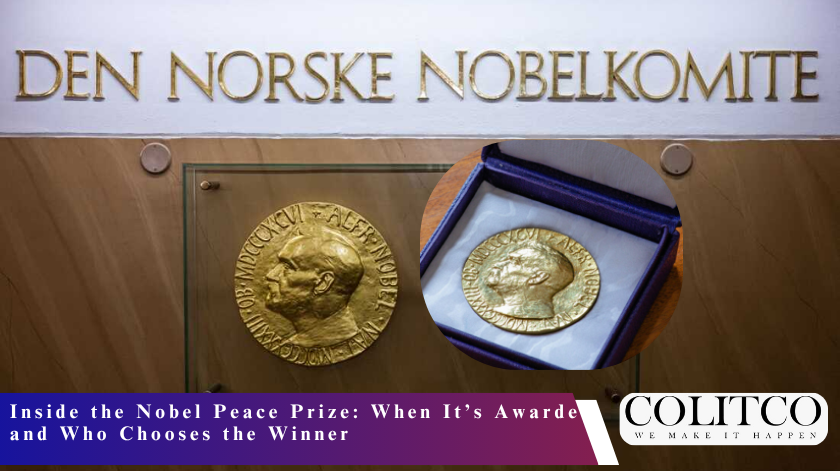The Nobel Peace Prize stands among the world’s most recognised honours. The award celebrates individuals and organisations that advance peace. The announcement attracts international attention every October in Oslo, Norway. The prize reflects Alfred Nobel’s will, which outlined the recognition of those who promote fraternity among nations and work for disarmament and peace congresses.
The ceremony always occurs on 10 December to mark Alfred Nobel’s death anniversary. The Norwegian Nobel Committee announces the Peace Prize winner beforehand in early October. The committee’s declaration draws interest from governments, academics, and global citizens. The Peace Prize continues to represent a commitment to reconciliation and diplomacy.
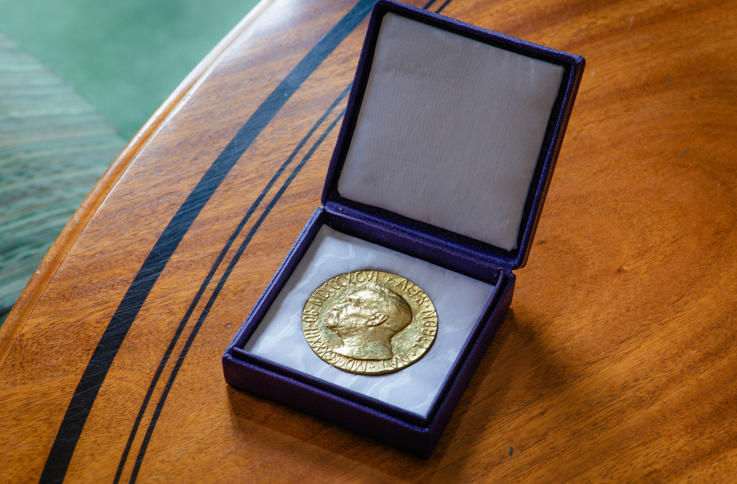
Committee Structure and Decision Process
The Norwegian Nobel Committee maintains responsibility for selecting the Peace Prize laureate. The committee operates under the Norwegian Parliament, known as the Storting. The members number five in total. The parliament elects them for six-year terms, and re-election remains possible. The selection process upholds confidentiality and deliberation.
The committee receives nominations from qualified individuals across the globe. Each January, nominations officially open and remain active until the end of that month. Eligible nominators include university professors, parliamentarians, judges of international courts, and former laureates. The wide pool ensures representation from every region and discipline.
The Norwegian Nobel Institute supports the committee administratively and academically. The institute conducts background research, prepares reports, and coordinates with nominators. The committee examines the candidates’ contributions based on available evidence and verifiable achievements.
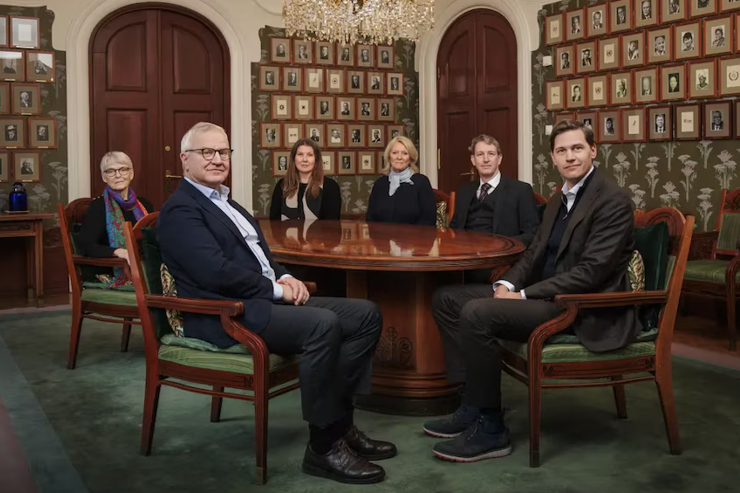
Evaluation and Nomination Numbers
Nominations typically number in the hundreds every year. In 2024, the committee received around 350 nominations, showing broad participation worldwide. These include both individuals and organisations. The Institute reviews every nomination to ensure it meets the rules outlined in Nobel’s will.
The committee studies reports and debates throughout the year. It finalises a short list by April. Members request expert assessments on selected nominees from historians, political scientists, or human rights specialists. These assessments remain confidential. Committee discussions continue until the autumn when the final decision occurs.
The awardee must represent significant progress towards conflict resolution, reconciliation, or humanitarian advancement. Every nomination undergoes equal examination regardless of fame or nationality. The committee’s majority vote determines the laureate, and the result remains undisclosed until the official announcement.
Alfred Nobel’s Vision and Historical Context
Alfred Nobel, a Swedish industrialist and inventor, left most of his fortune to establish five awards in 1895. He directed that the Peace Prize should be decided in Norway instead of Sweden. His will stated that the award would honour the person who has “done the most or the best work for fraternity between nations, for the abolition or reduction of standing armies, and for the holding and promotion of peace congresses.”
The Peace Prize became first awarded in 1901. The distribution between individuals and organisations has since varied. Past recipients include the International Committee of the Red Cross, Martin Luther King Jr, Malala Yousafzai, and Nelson Mandela. Each winner symbolises the evolving nature of peace efforts across generations.
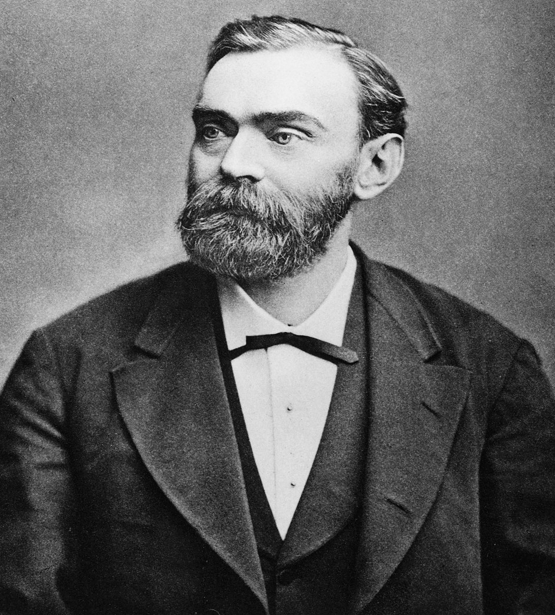
Prize Presentation and Ceremony Details
The Peace Prize ceremony takes place in Oslo City Hall. The event involves Norway’s Royal Family, government officials, and international guests. The laureate receives a medal, a diploma, and a financial prize. The prize amount fluctuates depending on the Nobel Foundation’s financial performance. In 2024, recipients received 11 million Swedish kronor.
The ceremony includes speeches from the chair of the Norwegian Nobel Committee and the laureate. Media coverage extends globally through live broadcasts and digital platforms. The laureate’s lecture occurs the following day and outlines their peace work and goals.
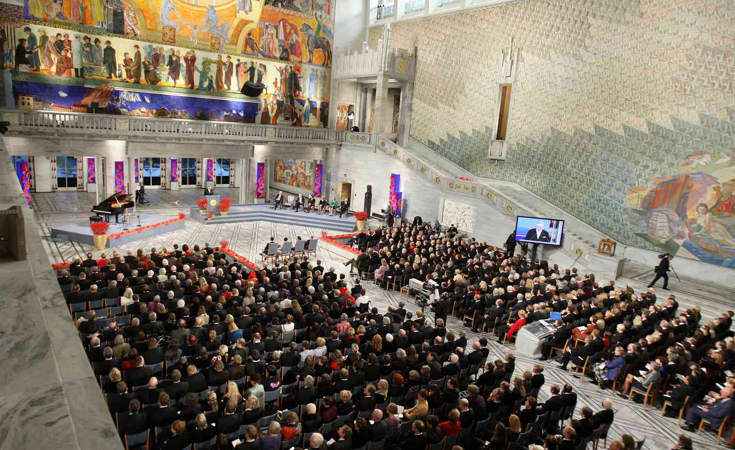
Nobel Peace Prize ceremony at Oslo City Hall
Recent Developments and Global Relevance
The Peace Prize continues to reflect global challenges. Climate activism, humanitarian aid, and human rights remain frequent nomination themes. Recent winners have represented journalists, volunteers, and negotiators promoting communication, safety, and humanitarian access.
Each selection influences diplomatic conversation worldwide. Many governments acknowledge the honour as an encouragement for continued peace efforts. The Nobel Committee maintains neutrality and independence within its mandate. The members continue to emphasise factual evidence and measurable peace outcomes.
The Nobel Foundation in Stockholm oversees the overall administration and financial management for all Nobel Prizes. The foundation coordinates with the Norwegian Nobel Committee for the Peace Prize but does not intervene in decision-making. This separation ensures transparency in both structure and governance.
Documentation and Archival Policy
The committee seals all nomination records for 50 years. This policy protects nominators and preserves the integrity of deliberations. After the embargo period, the records open for academic study. Researchers then examine the evolution of peace concepts and global priorities.
These archives trace how interpretations of peace and diplomacy have shifted over time. They also help evaluate Nobel’s legacy within changing international frameworks. The confidentiality rule remains crucial to avoid external influence during decision-making years.
Also Read: Massive Tremor Rocks Philippines: Coastal Towns Race Against Tsunami Threat
The Continuing Influence of Nobel Awards
The Nobel Peace Prize continues to maintain prestige more than a century after its creation. It shapes diplomatic dialogue, supports civil society, and highlights moral leadership. Every October, global audiences await the announcement with anticipation. The chosen laureate often gains global recognition and increased influence in their field.
The award also encourages scrutiny of international politics and humanitarian challenges. Organisations and activists draw motivation from past winners and their lasting impact. Economic analyses indicate that Nobel recognition increases funding for related social initiatives and academic research.
The prize has contributed to international awareness of non-violence and dialogue. It frames global peace as an ongoing responsibility rather than a final achievement. The annual ceremony symbolises both remembrance of Alfred Nobel and celebration of continuous peace-building.
Enduring Symbol of Commitment
The Norwegian Nobel Committee continues to operate under Nobel’s principles and legal guidelines. The selection process, though confidential, upholds fairness and rigour. The Nobel Peace Prize remains a prominent instrument in promoting human cooperation.
Through consistent procedure and historical continuity, the Nobel Peace Prize links past efforts with future aspirations. The ceremony on December 10 each year reaffirms humanity’s pursuit of stability and reason.

